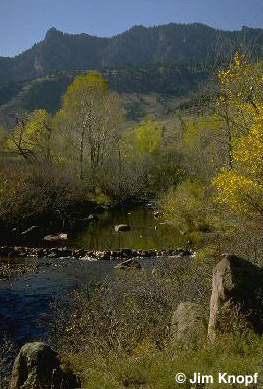

Conservation can provide the water, but laws must protect the water from other uses
There is increasing interest in preventing rivers from being dried up for irrigation, not just for endangered species and their habitats, but for fishing, rafting and other recreation. The "use it or lose it" doctrine of western water law, however, requires that water be put to "beneficial use". This means protection of natural habitat, and recreation activities must be declared legally "beneficial".
All western states, but New Mexico have provided some means to protect minimum instream flows. Arizona, for example, has provided for instream flows since 1940, and has issued at least 14 certificates protecting stream flows. Oregon established legal instream flow rights in 1955, and the state's Department of Fish and Wildlife holds rights protecting 1,300 stream sections. Colorado's program was created in 1973, and now legally recognizes protection of stream ecosystems as a valid use of Colorado water. Under this law, Boulder, Colorado has provided water to maintain a minimum flow in Boulder Creek through the city, with plans to provide similar protection for South Boulder Creek in the city's surrounding green belt.
The water for instream flows usually must come from some other existing use. In Boulder, conservation has reduced demand enough to provide much of the water for minimum stream flow.
One reason to promote water conservation is to maintain minimum stream flows for ecological and recreational purposes.
INVITATION BASIN is a community project actively seeking public participation. We appreciate all feedback and welcome comments, suggestions and contributions. To find out more about how you can be involved, click here. Help BASIN serve your needs, take our "10 questions in 10 seconds" survey.BASIN is supported by the US EPA, the City of Boulder, the Keep it Clean Partnership, BCWI and BCN Home | Site Map | Glossary | Bibliography | Contributors
About BASIN | Attribution | Feedback | Search